I think every artist has them. Paintings that for some reason just do not work out. They are usually fun and exciting while the artist is in the process of creating them, be they plein air or studio pieces, but when viewed once the novelty wears off, there is that sinking realization that the painting is not really working. Sometimes there is an easy fix. Other times the only answer is to scrape the painting. But occasionally the painting that does not really work hangs out in the studio because for some strange reason the artist cannot part with it. I think artists often instinctively realize there is something that is actually working in these paintings, but it is often hard to put a finger on it.
There is an old saying that “you can’t make a purse out of a sow’s ear”. Sometimes I believe an artist can and with those very paintings, one has been reluctant to toss. Usually, it involves cropping and considering the idea of “what is this painting about”. Occasionally, it is some weird, totally out of left field realization when you start exploring different cropping formats. I feel that I have had some real success rethinking paintings and changing the format of my images.
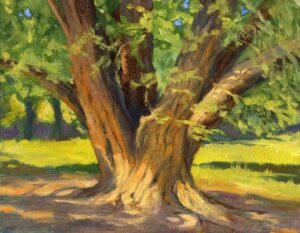
11″ x 14″
This painting was a plein air piece done several years ago at Rancho de Las Golondrinas near Santa Fe. I was initially attracted to the roots of the tree and the blowing branches. I got excited and, with the easel threatening to blow over, launched into the painting. I was thrilled to pull something off and it was not until later that I realized there was a major flaw in this work. I put the tree right in the center of the painting. While that can work sometimes, here it just made the piece stagnant.
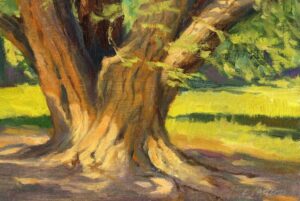
7.5″ x 11″
The painting lived in a flat file for a year or so. Finally, I started exploring cropping the painting trying to focus on what attracted me to the image initially. Once I started this process using two cardboard pieces cut in an “L” shape, I realized that I could make the painting about everything that I had wanted to say by just cutting it down and thinking about putting the trunk on the golden mean. I was much happier with the new version and it did not involve any re-painting.
Of course, in this case, a little preliminary planning would have helped avoid the need to reformat, but sometimes the excitement and less than perfect conditions that are part of plein air painting can lead one astray.
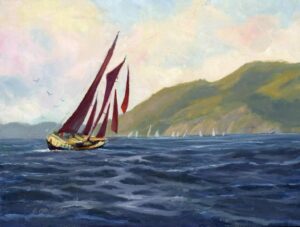
12″ x 16″
The next painting was inspired by a sailing trip on the San Francisco Bay.
This very impressive ship with red sails came alongside and I was able to get a decent photo for reference. The enormity of the bay was something that also felt important to capture in the painting.
However, it never seemed to work for me when it was completed…I finally decided that the point of the painting really was the ship and I had made it far too small in relation to the rest of the painting. After cropping it down, I was much happier with the piece and it did not really change the feeling that the bay is a big body of water.
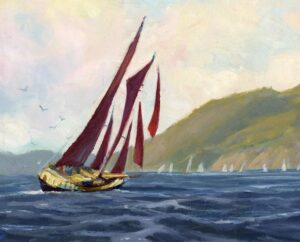
8.5″ x 10.5″
Cropping also eliminated the other problem I created when I divided the original painting into two equal sections with the horizon line.
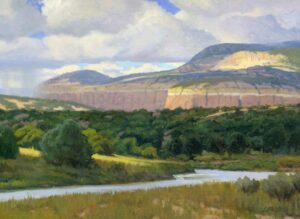
18″ x 24″
This was a studio painting of the Chama River based on a small plein air painting and several photographs. The weather was constantly changing when I was on site and it was all quite dramatic with billowing clouds, rain, and the sun illuminating the cliffs in constantly changing patterns. While working on this piece I tried to capture all that excitement and I really enjoyed the process. But in the end, I had way too much excitement and no one thing to focus on. Five focal points really do not work in a painting. This painting sat around for months as I considered if it could somehow be salvaged. Cropping seemed to be one possible solution, but how much to crop was constantly being evaluated. It came down to two possibilities.
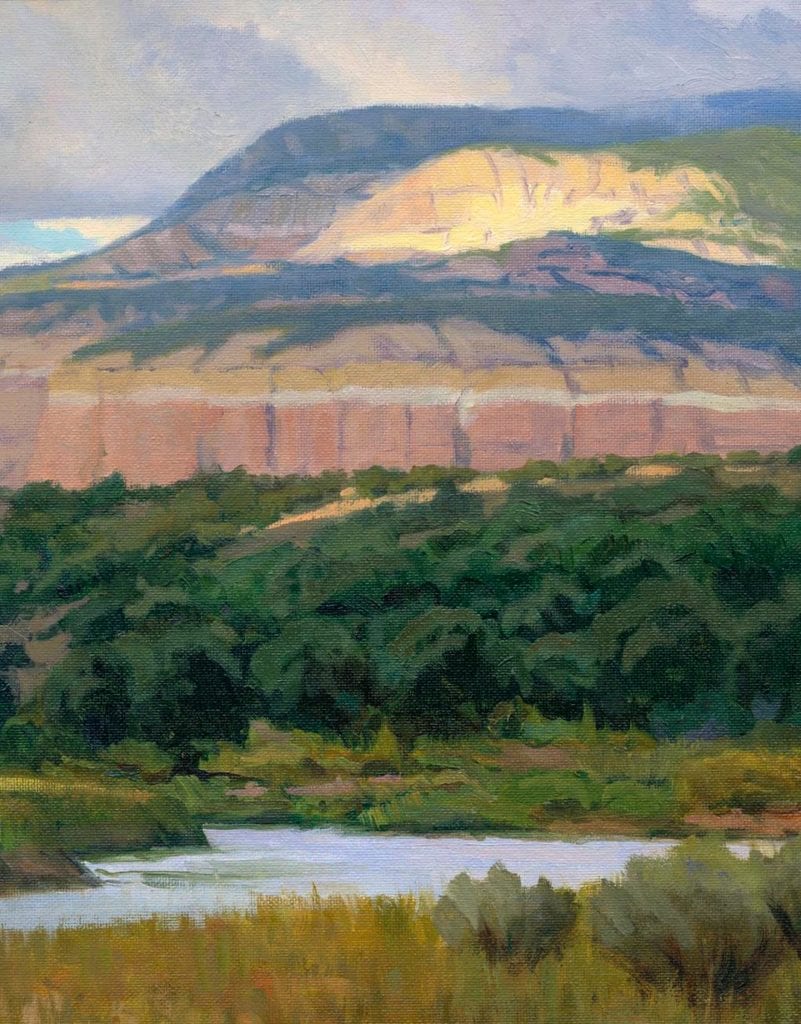
“Rain On The Chama” by Lee MacLeod
13″ x 10″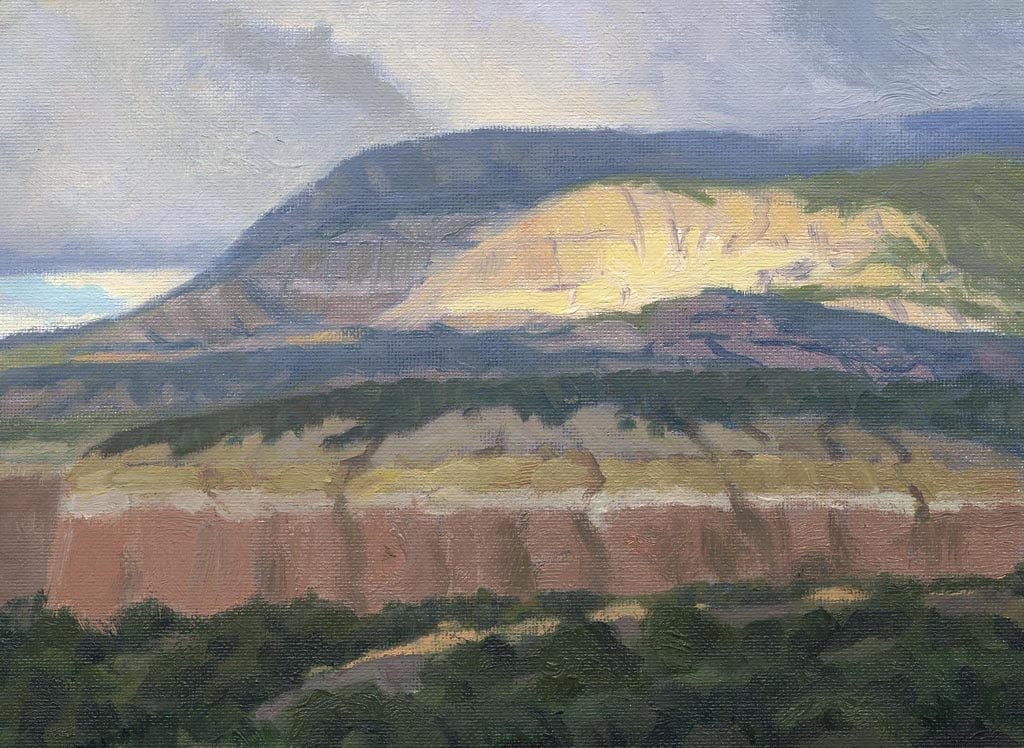
“Sun Struck” by Lee MacLeod
8″ x 11″
In the end, I chose to go with the tight crop. Of course, I had to change the title as the Chama River had been eliminated, but for me, the excitement of the day could still be summed up in a far smaller painting. I got in trouble in the beginning because I really did not think through what I wanted to focus on. The new painting is probably just going to stay in the studio as a reminder to me to think a bit deeper about what I want to say in a painting before jumping in and the importance of a focal point. However, in one of those out of left field realizations, I ended up with a cut up section of the painting with the clouds from the left side of the original 18”x24”. The realization was that I really liked those clouds and they deserved better. I think they were always the “something good” that was happening in the painting. It just took forever to figure it out. With the addition of a new foreground a new painting was created, one I really liked. The new foreground was out of my head, but I had recently spent a week in Borrego Springs, CA painting on location and I had become quite familiar with the general idea of the mountains and landscape there.
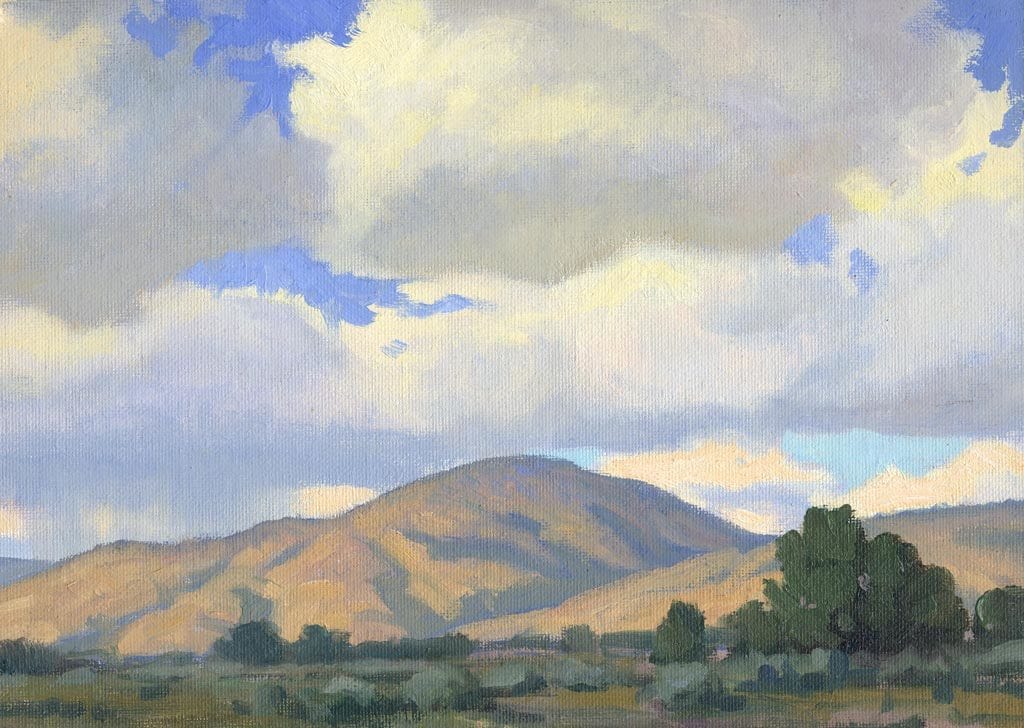
“Desert Storm” by Lee MacLeod
8″ x 11″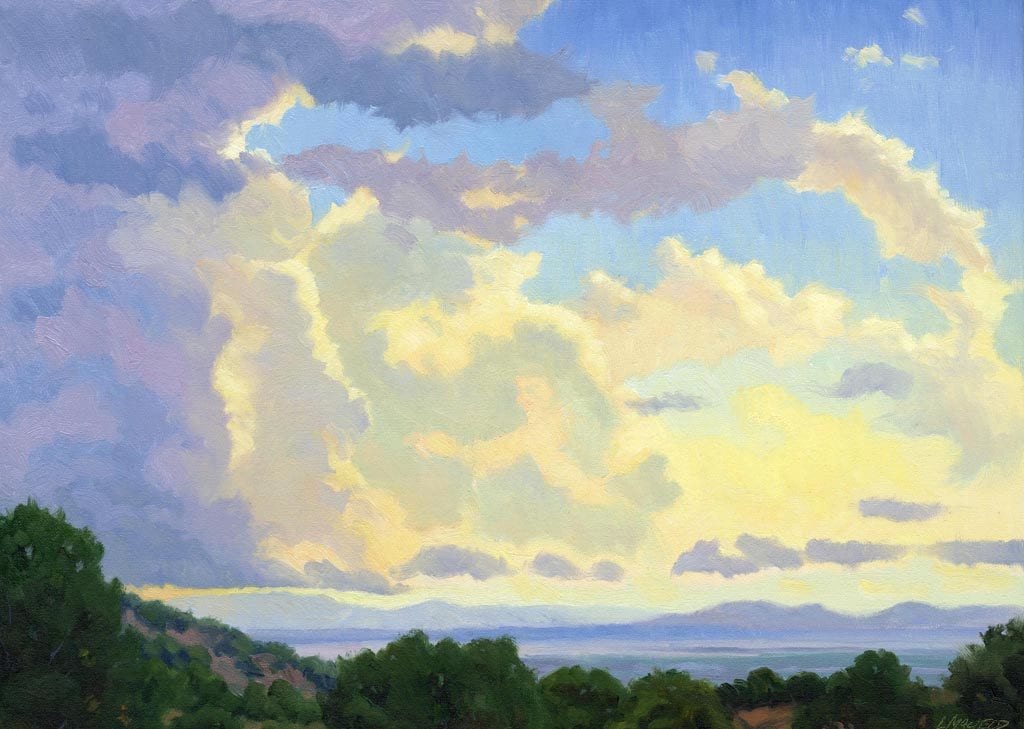
“New Mexico Evening Sky”
by Lee MacLeod
16″ x 24″
I started the above painting with high hopes. It is more or less the view south from my studio in Santa Fe. I was particularly interested in creating a dramatic evening sky. Unfortunately, I was not at all thrilled with the final painting especially the foreground. The colors were insipid. Several times I contemplated consigning it to the proverbial circular file and each time I ended up putting it back in the flat file. One afternoon it came out again. I had a lot of unused paint on my pallet and I resolved to use it to change this painting into something that did not put my teeth on edge. The only thing I liked at all was a chunk of the sky, so that remained. I cut it down and repainted the foreground and I think something good came of it. I was suddenly very happy that I had not given up on it and felt that I had made good use of what was actually working in the original piece. Again the foreground is made up, but I have been painting arroyos in New Mexico for ten years and am pretty comfortable faking those.
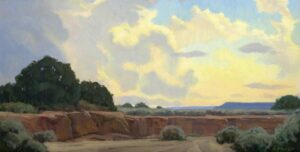
12”x24”
So there you have it, think I got the purse from the sow’s ear and it is a good reason to keep some paintings around that are not working. Discovering what is working is the first step and cropping alone can often resolve the problem. Cropping and some radical reinterpretation can also produce a successful painting. The fact that prior to attempting to possibly save a painting, you are confronting something that is not working and therefore not precious, allows for a lot of freedom. Fortunately, I do not have to go through all of this every time. I actually do produce work that has a decent design, a point of focus and some color harmony. However, when I don’t it is nice to think that something good might arise from my initial failure.
Lee MacLeod –leemacleodfineart.com